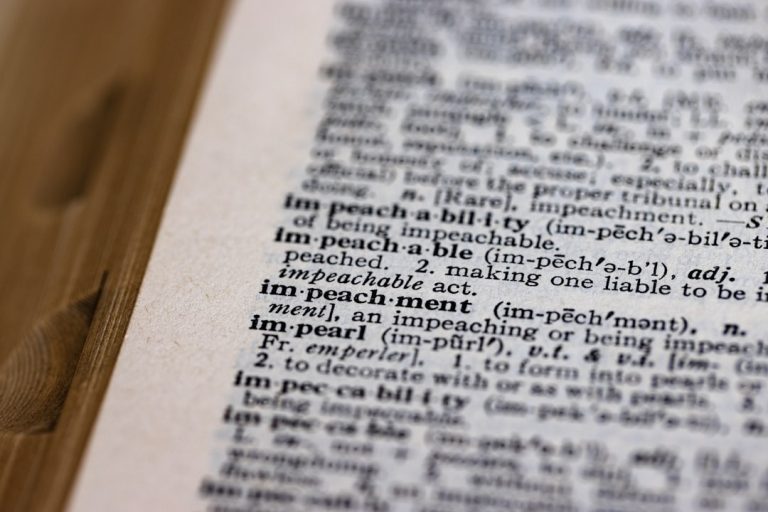
Irregular verbs are a unique category within the English language that defy the standard rules of conjugation. Unlike regular verbs, which typically form their past tense and past participle by adding “-ed” to the base form, irregular verbs undergo various changes that can be unpredictable. This irregularity can manifest in several ways: some verbs may change entirely, while others might only alter a vowel or consonant.
” This unpredictability can pose challenges for learners of English, as memorization becomes essential for proper usage. The significance of understanding irregular verbs extends beyond mere grammatical correctness; it also enhances fluency and comprehension in both spoken and written communication. Mastery of these verbs allows speakers to convey actions accurately across different tenses, enriching their language skills.
Furthermore, irregular verbs are prevalent in everyday conversation and literature, making them crucial for effective communication. As such, a solid grasp of these verbs is foundational for anyone looking to achieve proficiency in English.
Key Takeaways
- Irregular verbs do not follow the standard rules for verb conjugation and must be memorized individually.
- Common irregular verbs in American English include “go,” “eat,” “see,” “take,” and “write.”
- Irregular verbs can be used in different tenses, such as past, present, and future, and require specific forms for each tense.
- Mastering the past participle forms of irregular verbs is essential for constructing perfect tenses in English.
- Tips for memorizing irregular verbs include creating flashcards, using mnemonic devices, and practicing regularly.
Common Irregular Verbs in American English
A selection of common irregular verbs serves as the backbone of everyday communication in American English. Among these, “be,” “have,” and “do” are perhaps the most frequently used. The verb “be” has multiple forms: “am,” “is,” “are,” “was,” and “were,” each serving different grammatical functions depending on the subject and tense.
Similarly, “have” can appear as “has,” “had,” or remain as “have,” depending on the context. The verb “do” also varies, with forms like “does” and “did” playing critical roles in questions and negations. Other notable irregular verbs include “go,” “come,” “see,” and “take.” Each of these verbs exhibits unique transformations that learners must internalize.
For example, the verb “go” changes to “went” in the past tense and “gone” as a past participle, while “see” becomes “saw” and “seen.” These variations not only highlight the complexity of English grammar but also underscore the importance of practice and familiarity with these verbs to ensure accurate usage in conversation and writing.
Using Irregular Verbs in Different Tenses

The ability to use irregular verbs correctly across various tenses is essential for effective communication. In English, verbs are typically categorized into three main tenses: past, present, and future. Irregular verbs often require special attention when conjugating them into these tenses due to their non-standard forms.
For instance, the present tense of the verb “to eat” is simply “eat,” but when shifting to the past tense, it becomes “ate,” and the past participle is “eaten.” This shift can be confusing for learners who may instinctively apply regular conjugation rules. In addition to simple tenses, irregular verbs also appear in perfect tenses, which combine auxiliary verbs with past participles. For example, in the present perfect tense, one might say, “I have eaten,” where “have” is the auxiliary verb and “eaten” is the past participle of “eat.” Understanding how to navigate these tenses is crucial for constructing grammatically correct sentences. Moreover, mastering the use of irregular verbs across different tenses allows speakers to express time-related nuances effectively, enhancing their overall communicative competence.
Mastering the Past Participle Forms
| Verb | Base Form | Past Participle |
|---|---|---|
| Play | Play | Played |
| Run | Run | Run |
| Write | Write | Written |
| Swim | Swim | Swum |
The past participle form of irregular verbs is particularly important in constructing perfect tenses and passive voice sentences. Unlike regular verbs that simply add “-ed,” irregular verbs can take on entirely different forms that must be memorized. For example, the verb “write” has a past participle form of “written,” while “break” becomes “broken.” This divergence from standard patterns necessitates focused study and practice to ensure correct usage.
In addition to their role in perfect tenses, past participles are also integral to passive constructions. For instance, in the sentence “The book was written by the author,” “written” serves as the past participle that indicates an action completed by someone else. Understanding how to use past participles effectively not only aids in grammatical accuracy but also enriches one’s ability to convey complex ideas succinctly.
Therefore, mastering these forms is essential for anyone aiming to achieve fluency in English.
Tips for Memorizing Irregular Verbs
Memorizing irregular verbs can be daunting due to their unpredictable nature; however, several strategies can facilitate this process. One effective method is grouping verbs based on their patterns or similarities. For instance, many irregular verbs share common vowel changes, such as “sing” (sang, sung) and “ring” (rang, rung).
By categorizing these verbs into groups, learners can create mental associations that make recall easier. Another useful technique involves creating flashcards that display the base form on one side and its corresponding past tense and past participle on the other. This method allows for active recall practice, which has been shown to enhance memory retention significantly.
Additionally, incorporating these verbs into daily conversations or writing exercises can reinforce learning through practical application. Engaging with irregular verbs in context helps solidify their forms in memory while also improving overall language skills.
Common Mistakes to Avoid with Irregular Verbs

When learning irregular verbs, certain pitfalls are common among learners that can lead to errors in usage. One frequent mistake is applying regular conjugation rules to irregular verbs. For example, saying “goed” instead of “went” or “eated” instead of “ate” reflects a misunderstanding of how these verbs function.
Such errors can undermine clarity in communication and may lead to misunderstandings. Another common issue arises with the use of past participles in perfect tenses. Learners may confuse forms like “have went” instead of “have gone.
To avoid these errors, it is crucial for learners to practice consistently and seek feedback from proficient speakers or educators who can provide guidance on correct usage.
Practicing Irregular Verbs in Context
To truly master irregular verbs, practice in context is essential. Engaging with these verbs through reading, writing, speaking, and listening activities allows learners to see how they function within real-life scenarios. For instance, reading literature or articles exposes learners to various verb forms used naturally by proficient speakers.
This exposure helps reinforce correct usage while also expanding vocabulary. Writing exercises that incorporate irregular verbs can also be beneficial. For example, learners might write short stories or journal entries that require them to use a variety of irregular verbs in different tenses.
Additionally, speaking exercises such as role-playing or conversation practice can provide opportunities for learners to apply their knowledge dynamically. By immersing themselves in contexts where irregular verbs are prevalent, learners can enhance their fluency and confidence in using these essential components of English grammar.
Resources for Further Study and Practice
Numerous resources are available for those seeking to deepen their understanding of irregular verbs and improve their usage skills. Online platforms such as language learning websites often provide interactive exercises specifically focused on irregular verb conjugation. These platforms may include quizzes that test knowledge through multiple-choice questions or fill-in-the-blank activities that encourage active engagement with the material.
Books dedicated to English grammar also serve as valuable resources for learners at all levels. Many grammar workbooks include sections on irregular verbs with exercises designed to reinforce learning through practice. Additionally, mobile applications focused on language learning often feature games and flashcards that make studying irregular verbs more enjoyable and effective.
By utilizing a combination of these resources, learners can create a comprehensive study plan that addresses their individual needs while fostering a deeper understanding of irregular verbs in English.
If you are interested in American English Grammar and irregular verbs, you may also find the article “How to Improve English Vocabulary: An English Learner’s Guide eBook” from ESL Institute to be helpful. This article provides tips and strategies for expanding your English vocabulary, which can be essential for mastering irregular verbs and other aspects of grammar.
FAQs
What are irregular verbs in American English grammar?
Irregular verbs in American English grammar are verbs that do not follow the regular pattern of adding -ed to form the past tense and past participle. Instead, they have unique forms that must be memorized.
How do irregular verbs differ from regular verbs?
Regular verbs in American English form their past tense and past participle by adding -ed to the base form (e.g. walk, walked, walked). Irregular verbs, on the other hand, have unique past tense and past participle forms that do not follow this pattern (e.g. go, went, gone).
Can you provide examples of irregular verbs in American English?
Some examples of irregular verbs in American English include: go (went, gone), eat (ate, eaten), swim (swam, swum), and break (broke, broken).
How can I learn irregular verbs in American English?
Learning irregular verbs in American English requires memorization of the past tense and past participle forms for each verb. It can be helpful to study lists of irregular verbs and practice using them in sentences to reinforce the correct forms.






